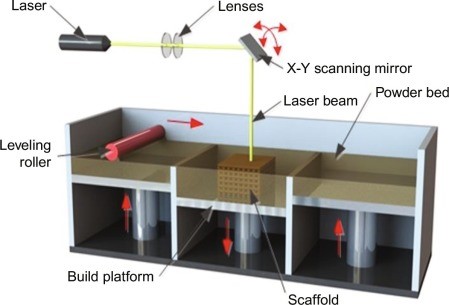Since its invention, the cost of metal 3D printing continues to decline, fueling demand for this technology. This has broadened its availability and affordability to businesses as well as to home-based business owners and hobbyists. With the increased use of this technology, especially by people who may be less familiar with operating this equipment, the material/structural integrity of finished 3D printed parts, or with copyright infringement laws, suggests a greater exposure to a new set of liabilities and legal issues.
A metal 3D printed object can have material and/or structural flaws. These flaws may stem from a defect of the raw material, the product design, the CAD and layering process, or the underlying manufacturing process.
The most common manufacturing defect is called “vapor depressions.”9 These are cavities produced when the laser drills into the metal and pockets of gas become trapped into the layers. This causes imperfections that could lead to cracks or other defects in the final product, compromising its integrity and resulting in a potential financial loss.
If a loss occurs then what are the ramifications? If a metal 3D printed part fails, who would be responsible and liable? Would it be the entity that designed the part or its production, or is it the manufacturer of the 3D printer or the developer of the 3D printer CAD software? Given the rapidly evolving state of this new market, it may not be easy to clearly delineate the responsible party and liability in such cases.
From an insurance perspective, the types of claims and loss scenarios that could result from metal 3D printing exposures include:
- Workers Compensation - Employees could be exposed to printing materials with proprietary ingredients that could have a latent occupational disease exposure, or they may injure themselves operating certain equipment.
- Intellectual Property Rights (“IP”) - IP enforcement issues may occur as anyone with a metal 3D printer is able to print replicas of patented devices and/or copyrighted parts?10 These concerns are further heightened for more complex and technical products such as parts used in airplanes and in medical applications.
- Products Liability - There could also be issues with the metal 3D printer itself. The printer may have a manufacturing defect, or erroneous or missing instructions and warning labels. These could lead to typical products liability claims against the printer manufacturer stemming from property damage and/or bodily injury to individuals that use the metal 3D printers.
Additionally, with the metal 3D manufacturing of medical products, specifically implantable components and devices, there is exposure from contamination, metal leaching, product failure and product recall.11
The first 3D product printing litigation is a class action suit against the 3D printer manufacturer Makertbot. According to reports, they were alleged to knowingly selling faulty printers with poor printing quality and recurring problems.12
To date, metal 3D printing product liability cases have been limited, as the technology is relatively new and in limited use. How liability is apportioned to the various parties in this manufacturing chain is evolving. What is certain is that the law will need to adapt as metal and other forms of 3D printing become more available in the marketplace and relevant in the supply chain.
